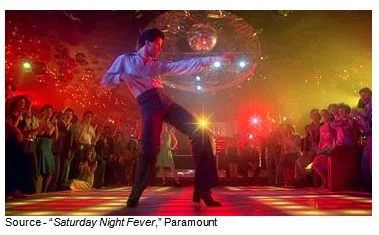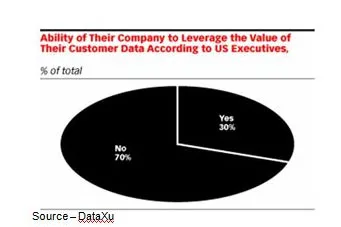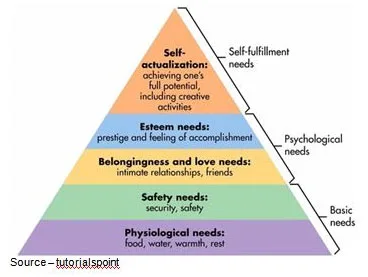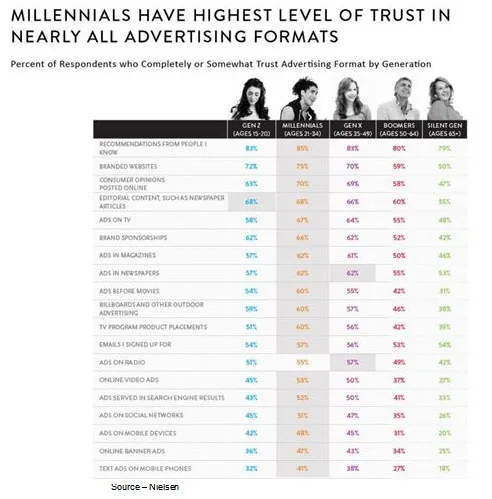The Most Effective Marketing Comes from the Customer

The toughest job in a company today – yes we know, it’s yours but … it’s the lofty title of CMO (chief marketing officer).
How tough could that be?
The CMO gets to dictate how the budget is going to be spent. You know … the events, the contests, the ads, the web site, the social media stuff, all designed to project the brand image the company wants to project.
And to do it he/she today has an unbelievable tsunami of data about the customer and prospective customer.
If they don’t have the information, it ain’t worth knowing!
In addition, they have a shopping cart full of analytical tools to give them in-depth insight into the customer’s behavior to lead the way for increased revenues.
The only problem is it’s all based on SWAG (scientific wild *** guesses) and there isn’t a whole lot of precision involved.

The marketing person won’t admit it to you – and perhaps not even to him/herself, but there is no status quo, no clear/concise roadmap for ownership, success.
Today’s digitally native consumer has taken control of the buyer-seller relationship. They are guiding, determining what they want/need, evaluate what’s available, and carry out the transaction.
And the uncomfortable truth is they have no intention on relinquishing their control.
They have obliterated the time-proven sales processes and cycles, leaving the marketing person with a huge mound of meaningless, useless data and a ton of expectations from the boss and other stakeholders.
We’ve entered the era some pundits like to call real-time marketing, where some of these folks think they have to be first to win the moment.
The only problem is the customer simply doesn’t care.
He/she doesn’t care if you’re first – or not.
However, they are quick to let you know if you make a mistake.
Just as firms are struggling to deal with new competitors and new business models, the rapid innovation of products/services and rising customer expectations they stand ready to tell you when potential customers misinterpret, don’t pay attention to or don’t notice the context of their carefully crafted message(s).
Marketing spends a lot of time, effort and money measuring and explaining their ROI (return on investment); but very little (if any) on the cost of nonparticipation–not being seen/mentioned, little to no competitive share of voice, no control over how consumers are talking about brands in their market area.
If no dollars and cents are spent, how much return is lost?
There is a risk of loss by not contributing/participating in the consumers’ areas of primary interest.

Aligning first with the customers’ primary interests and secondarily with the company’s objectives is difficult and painful to measure but is it less important for the firm that is in business for the long haul?
Assigning a dollar value to the worth of social impact/influence isn’t easy but it can have a more profound (profitable) long-term impact on the organization’s web traffic/conversions.
Consistently, across all generations, people place the greatest trust in opinions of friends, family and people they know as well as consumer opinions and editorial coverage for their considerations, evaluations and purchasing decisions.

Sometimes the brand or company isn’t directly invited into the conversation because the moment or topic may not be right; but it doesn’t mean there is no value in the discussion or the ultimate decision.
Yet all too often, these influences are simply credited to “over the transom,” incidental, accidental or lucky sales.
Sometimes the real value to the firm is to listen, evaluate the opportunities, tread lightly and at times say/do nothing.
Today, the customer plays the pre-eminent role in the technology purchasing equation and marketing has to fully embrace and understand how it has changed the way we do business and will do business in the future. Marketing has to shift its priority from building the brand to engaging the customer and appealing what ignites their passions.
That means creating the product ecosystem around what the customer wants to buy, not what you want to sell. Doing this quickly keeps the company, brand and products relevant.
Developing and maintaining a sincere, open two-way conversation with customers enables the company to learn as much as the customer knows … which is a lot!
User reviews are today’s hands-on demos today.

An about.com study found that 84 percent of the respondents felt brands need to prove themselves trustworthy before they’ll interact with or consider them.
To generate trust in the firm’s accuracy, expertise and transparency; consumers placed a high priority in seeing a significant number of positive reviews. Credibility rose dramatically when they also didn’t hide less than positive reviews.
The key is for people to share experiences through the website and social media. In fact, some of your best creative marketing messages can come from customer reviews.
In addition, constantly monitor outside reviews; and when negative issues are raised, address them immediately and openly, resolve them and learn from the experience.
Providing useful information helps build consumer engagement and trust. It also gives people a more positive overall view of your brand.

Increasingly, that means visual information.
And according to WebDAM, there are good reasons for this influence:
- The average person gets distracted in eight seconds
- 81 percent of people only skim online content, reading 20-28 percent of the words
- People form their first impression in 50 milliseconds
- 84 percent of communications will be visual by 2018
- 79 percent of Internet traffic will be video by 2018
- Posts with images produce 650 percent higher engagement than text-only
- Video posts attract 3X more links
- People are 85 percent more likely to buy a product after a product video
The CMO Council emphasized though that the most effective video content doesn’t rely on or add a heavy sales message but rather sound, useful information. The greatest consumer demand was visual with photos (46 percent) and video (36 percent) being most important.
Perhaps that’s why videos on Facebook’s news feed have increased 3.6x, brand Facebook posts earned 85 percent more engagements and Tweets with images had 18 percent more clicks, 89 percent more favorites and 150 percent more retweets.
For years, marketing has been talking about gaining a complete view of the customer and managing the end-to-end customer experience.
Marketing is slowly, painfully beginning to use customer insight and intelligence to cross-sell and upsell customers as a group.
Only a few have mastered it at the individual consumer level.
Perhaps the best way to do this is to put the customer in charge?
 Or as Frank Manero Jr. noted, “Tony, the only way you’re gonna survive is to do what you think is right, not what they keep trying to jam you into. You let ’em do that and you’re gonna end up in nothing but misery!
Or as Frank Manero Jr. noted, “Tony, the only way you’re gonna survive is to do what you think is right, not what they keep trying to jam you into. You let ’em do that and you’re gonna end up in nothing but misery!
# # #